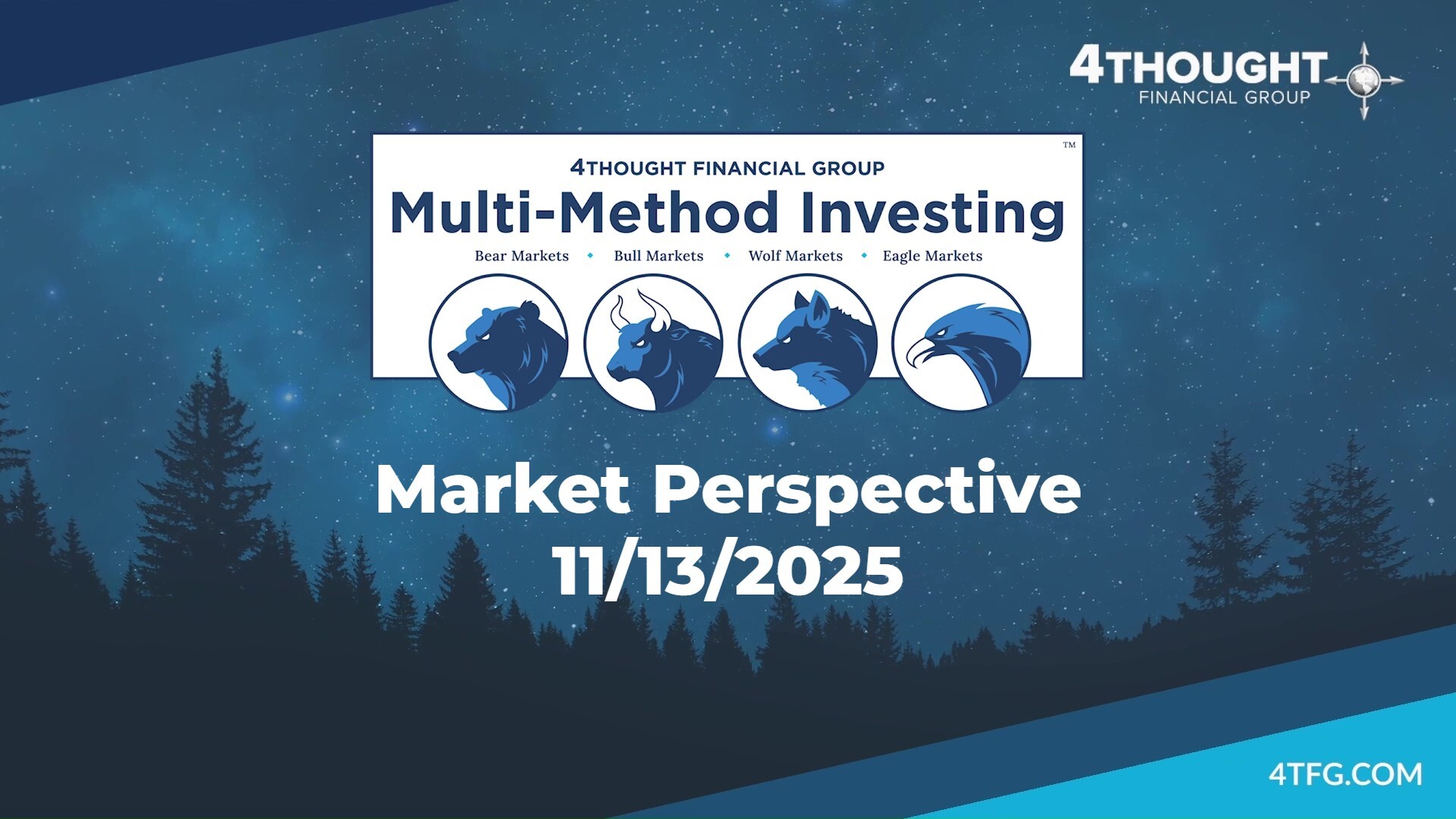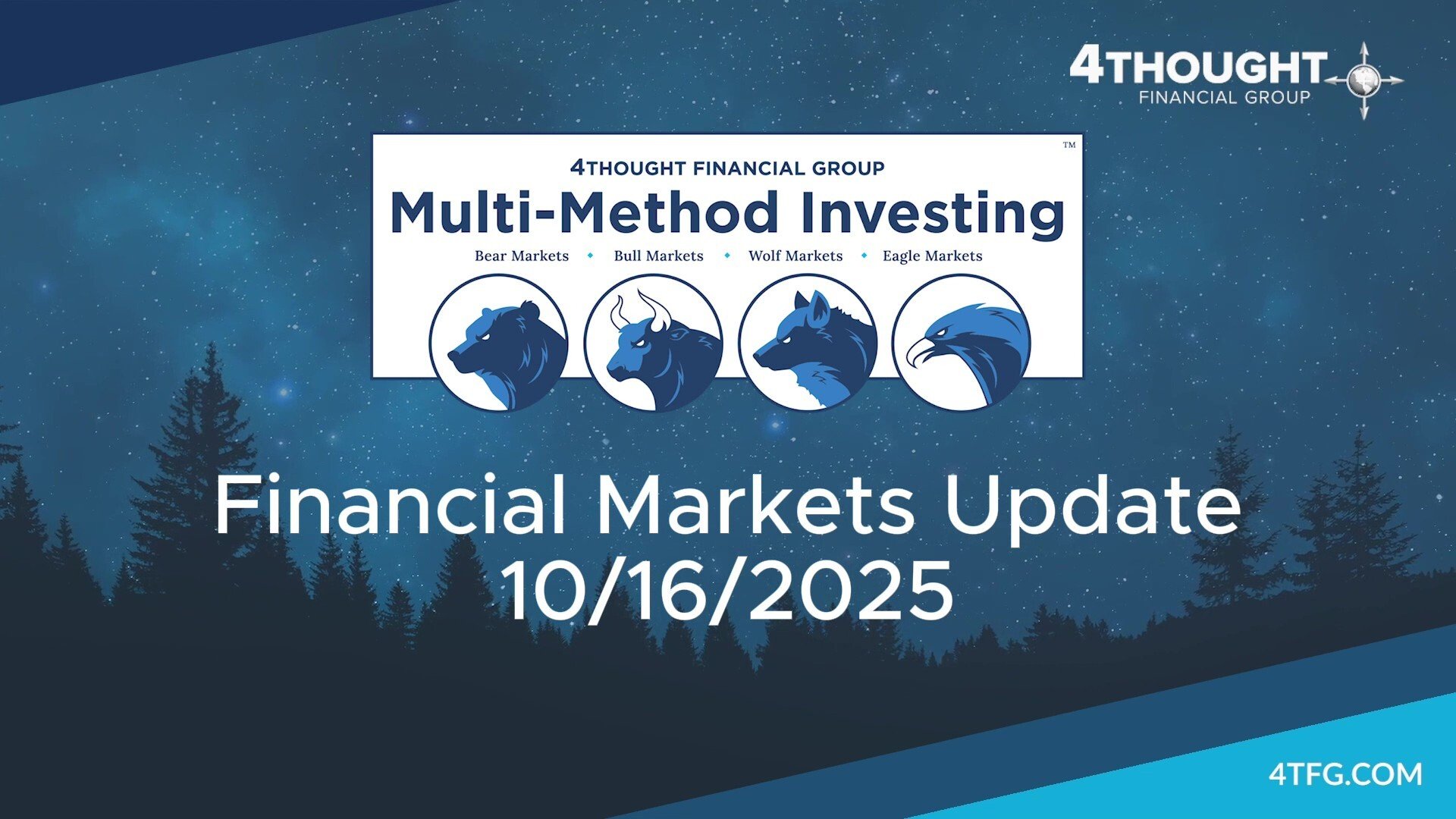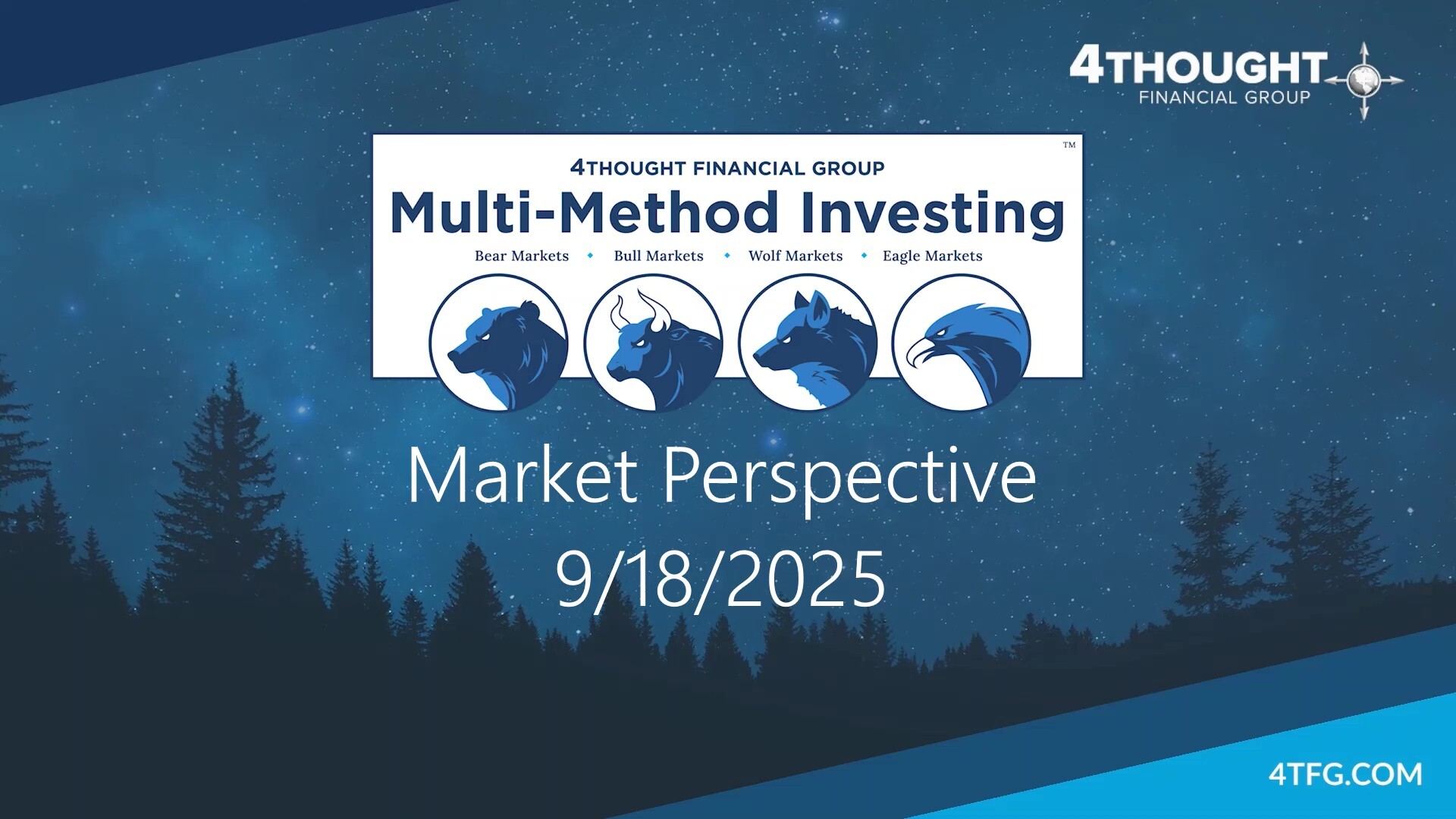4Thought provides you with actionable investment analysis and perspective on the financial markets.
Contact us to determine whether any ideas presented are applicable to your situation before taking any actions with regards to your financial plan or investment portfolio.
Hear from Chief Investment Officer Jesse Mackey in this week's Multi-Method Investing® Market Perspective.
VIDEO TRANSCRIPT:
I’m Jesse Mackey, CIO of 4Thought Financial Group, and this is 4Thought’s Multi-Method Investing® Market Perspective as of March 21st, 2023.
The failure and subsequent bailout of several regional banks in the United States during the last two weeks have some investors (and more importantly depositors) on edge with concerns about the safety of their assets. It's tempting to draw parallels between this situation and the domino effect contagion experienced in banking and the financial markets during the financial crisis of 2008-2009, but this comparison is probably misguided. Rather, it is more likely (and expected) that the recent spate of regional bank failures is symptomatic of the inflationary rising interest rate cycle that we are currently experiencing. Historical precedent would tell us that during such times it is common that higher-risk, smaller, and less-capitalized banks are likely to fall prey to rising rates. This is in fact a healthy function of the market cycle, in which weaker institutions are weeded out, leaving the remaining cohort stronger post-cycle. But if this is the case, it still provides little solace to those who are concerned about their current cash deposits in small regional banks. So here is a potential course of action for individuals with more than $250,000.00 deposited with a single banking institution under a single name/registration (to be discussed for appropriateness with your advisors before taking action):
1. Minimize your overall cash position by investing any excess cash not needed for safety/liquidity purposes or for known upcoming expenses in your diversified stock/bond/alternatives portfolio. (More on this approach will follow later/below.)
2. Move any remaining cash over the current $250,000.00 FDIC limit per institution/registration to another banking institution (or institutions), leaving no more than the $250K limit at any one bank under the same name/registration. While the federal government and the private sector have already bailed out or made whole the depositors at several institutions and have implicitly stated they would continue to do the same with additional bank failures, they have not formally raised the FDIC protection limit. Therefore, as of right now, the most conservative approach is to split the assets between banks.
Looking at things more broadly, both stocks and bonds started January of 2023 with positive advances, but each has experienced a significant lull during February and March. This comes after stocks ended 2022 with their worst calendar-year performance since 2008 (during the Financial Crisis). On 10/13/22 the S&P 500 (Price Return) Index reached the current maximum intraday draw-down of 27.5% from its 1/4/22 peak price. After a partial recovery in the time since then, the index sat 17.99% below the record as of the close of business yesterday. The initial indication of a Bear market on 5/20/22 (based on the technical intraday definition of a 20%+ decline), has very significant implications for portfolio management strategy.
The history of the S&P 500 index since 1950 reveals that once Bear markets have been identified (in which a 20%+ decline from a record peak has occurred), they have continued for an average of an additional 4.61 months and have experienced an average additional cumulative loss of 16.56% until the trough is reached (for a total cumulative drawdown of 33.2%). Six out of thirteen instances of a Bear turned around within 1 month after it was indicated (some as early as the same day), while all others lasted longer (up to a maximum of 1.63 years). As of the date of the deepest trough measured so far (on 10/13/22), 4.87 months had elapsed since Bear market indication, and 10.17 months have elapsed as of today (both measures longer than average). For long term investors that can afford to wait until a recovering upturn in the market cycle (which may or may not have already begun), such data calls for aggressive deployment of cash and cash equivalents into stocks (and bonds in this case). Long term investors should now consider an immediate deployment of 100% of any idle cash (not needed for short term liquidity or expected upcoming spending). There is no need to wait for further declines, or to use a dollar cost averaging program for idle cash (as was the case in the first 5 months after bear indication). This should be discussed with your advisor to confirm appropriateness for your situation before taking action.
Based on analysis of the complete historical market type data set using our Multi-Method Adaptive algorithmic process, we are now allowing overweight allocations to Strategic Asset Allocation, and underweights to Liability-Driven Investing, Opportunistic Investing and Selective/Concentrated Investing.
From a probabilistic analysis perspective, valuations tell a story that's positive for most stock types, but even more favorable for some bond types. On this basis, most stock types are now range from near fair value to "moderately" undervalued. By comparison, most bond types are now measured as "moderately" to "significantly" undervalued, with none of them near fair value. Treasury Inflation Protected Securities now reflect the most attractive pricing relative to the alternatives, while international developed markets stocks are the least attractive. International developed markets stocks are the best performing publicly traded broad asset type so far in 2023, while emerging markets stocks are the worst.
Against this backdrop the outlook for stocks in general is now significantly positive in the intermediate term based on the overall aggregate of our historical market-type data analysis and quantitative probabilistic analysis.
I hope this was helpful. If you have questions or you’d like to discuss what this means for your particular situation, please contact 4Thought at 516-300-1617 or at info@4tfg.com – and don’t forget to subscribe to our blog feed and our YouTube channel. Thanks for watching, and see you next time.






Leave a Comment